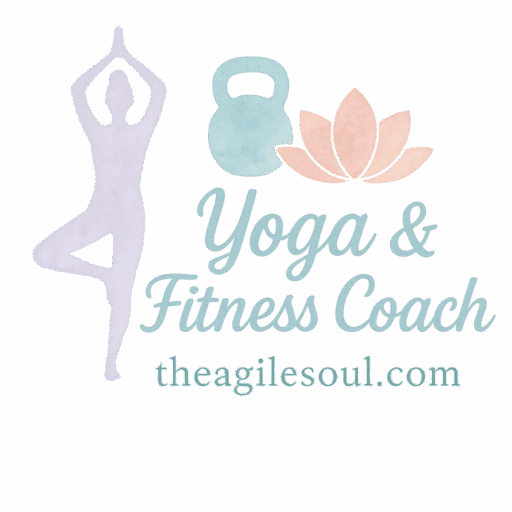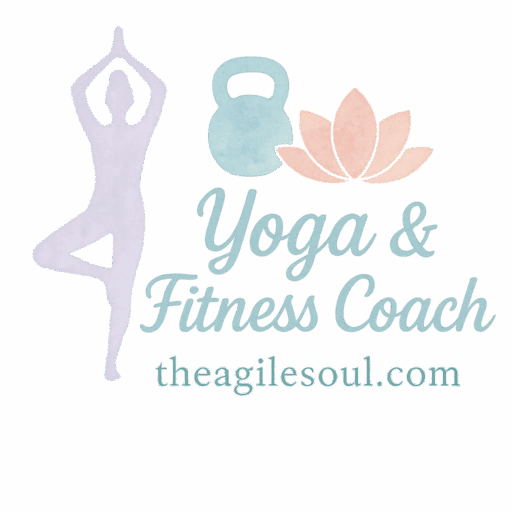Feeling overwhelmed, anxious, or just out of alignment? You’re not alone. But here’s the good news—your breath holds the power to reset everything. In this guide, we’ll explore 5 breathing techniques in yoga to calm the soul, helping you access inner stillness, soul connection, and radiant wellness.
Let’s dive deep into the breath, where transformation truly begins.
Why Breath Matters in Yoga
Breath: The Bridge Between Mind and Body
Think of your breath as the silent thread that ties your mind, body, and soul together. It’s not just about oxygen—your breath is energy (prana), your life force. In yoga, pranayama, or breath control, is the art of mastering this vital force to awaken, heal, and calm.
How Breathing Calms the Soul
The Science of Breath and Inner Peace
When we slow our breath, we activate the parasympathetic nervous system, shifting from “fight or flight” into “rest and digest.” This biological magic soothes your heart, brain, and body. It’s not woo-woo—it’s science and soul care combined.
Energetic Shifts Through Breath
Beyond biology, controlled breathing balances your chakras, clears emotional blocks, and raises your soul vibration—a concept celebrated across spiritual traditions and found in journeys like those at Spiritual Yoga Journeys.
1. Nadi Shodhana (Alternate Nostril Breathing)
This one’s a classic for a reason—it’s deeply cleansing, centering, and totally soul-soothing.
How to Practice Nadi Shodhana
- Sit comfortably, spine tall.
- Use your right thumb to close your right nostril.
- Inhale through the left nostril.
- Close the left nostril with your ring finger, open the right nostril, exhale.
- Inhale through the right, switch, and repeat.
Benefits of Nadi Shodhana for Soulful Balance
- Balances right and left brain hemispheres.
- Clears energy channels (nadis).
- Reduces stress and anxiety.
It’s an amazing way to start your day or transition from chaos to calm. Learn more about integrating this into your Yoga for Beginners journey.
2. Ujjayi Breath (Victorious Breath)
Also known as the ocean breath, Ujjayi is all about empowered, grounded breath. It’s commonly used during vinyasa flows but equally effective off the mat.
Practicing Ujjayi Breath Step-by-Step
- Inhale deeply through the nose.
- Slightly constrict the back of your throat.
- Exhale through the nose while keeping the throat gently engaged, like fogging a mirror.
Why Ujjayi Breath Grounds Your Spirit
- Focuses the mind during yoga practice.
- Builds internal heat and clarity.
- Anchors you to the present moment—pure mindfulness.
Feel the grounding power of this breath while flowing through poses in a soulful Yoga Lifestyle Practice.
3. Bhramari (Bee Breath)
This one’s unique—it involves humming like a bee. Sounds silly? Maybe. But it’s deeply calming and powerful.
The Sound of Inner Stillness
- Sit comfortably, close your eyes.
- Inhale through the nose.
- Close your ears with your thumbs, place fingers lightly over your face.
- Exhale while humming—like a gentle bee sound.
Using Bhramari to Relieve Emotional Overload
- Reduces anger and frustration.
- Clears mental chatter.
- Promotes deep soul healing.
Add Bhramari to your Mindfulness Meditation routine for a serene finish.

4. Sama Vritti (Box Breathing)
Sama Vritti means “equal breathing,” and it’s like giving your soul a reset button.
A Simple Rhythm for Peace
- Inhale for 4 counts.
- Hold for 4 counts.
- Exhale for 4 counts.
- Hold again for 4 counts.
Repeat for several rounds.
When to Use Sama Vritti in Daily Life
Perfect before a stressful meeting, during overwhelm, or while waiting in traffic. It’s easy, discreet, and incredibly effective at bringing you back to your center.
Pair it with Soul Wellness practices to build a deeper connection with your daily breathwork routine.
5. Kapalabhati (Skull Shining Breath)
This energizing breath wakes up your mind and body like sunshine on a foggy morning.
Igniting Your Inner Light Through Kapalabhati
- Sit with a tall spine.
- Take a deep inhale.
- Start exhaling rapidly through the nose, pulling your belly in with each exhale (inhales happen naturally).
Soul Benefits of Energizing Breathwork
- Detoxifies lungs and sinuses.
- Awakens mental clarity.
- Boosts your inner fire (agni)—the soul’s fuel.
Great as part of a Fitness Coaching plan or Soul Workout session.
Integrating Breath Into Your Yoga Lifestyle
From Fitness to Mindfulness: A Complete Journey
Breath is the thread that connects your fitness and mindfulness practices. Whether you’re flowing in a strength-building class (hello, Strength Yoga) or enjoying a cup of Yoga Tea post-meditation, breath supports it all.
Pairing Breathing with Meditation and Yoga
The Perfect Duo: Pranayama & Mindfulness Meditation
Combine these breathing techniques with regular meditation sessions from Mindfulness Meditation to magnify the soul-calming benefits.
Soul-Centered Yoga Flows with Breath Awareness
Let your breath guide every pose, every transition. Whether you’re a newbie following Yoga for Beginners or exploring Soulful Yoga, it all starts with conscious breathing.
Herbal and Lifestyle Support for Deeper Breathing
Nature’s Allies: Teas and Herbs for Calm Breathing
Boost your breathwork with calming herbal support like:
- Tulsi (Holy Basil)
- Chamomile
- Lavender
- Peppermint
Explore more in our Herbal Support section for teas that deepen breath and calm your soul.
Final Thoughts: The Breath Is Your Soul’s Anchor
Your breath is always with you—free, accessible, and powerful. Use it. Trust it. Let it lead you home to yourself. Whether you’re deep into your practice or just getting started with Yoga for the Soul, these five techniques offer sacred simplicity in a chaotic world.
FAQs
1. What is the best breathing technique for beginners?
Nadi Shodhana is gentle and easy to learn, making it ideal for beginners.
2. Can I do these techniques daily?
Absolutely. Just 5-10 minutes a day can have profound effects.
3. Is breathing enough for mindfulness?
Yes. Breath alone can anchor your awareness and is central to Mindfulness practice.
4. Can breathwork replace meditation?
Not exactly, but it enhances meditation and often leads to a meditative state on its own.
5. Is Kapalabhati safe for everyone?
It’s best to avoid if you’re pregnant, have high blood pressure, or recent surgery. Consult your instructor.
6. How can I track progress in breathwork?
Journal how you feel before and after sessions. Notice mental clarity, mood, and body responses.
7. Where can I find more soul-aligned yoga content?
Head over to The Agile Soul for deeper insights, soulful journeys, and a full library of resources.


